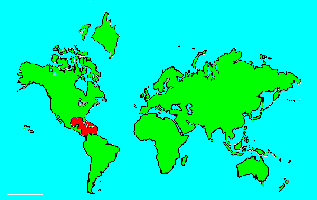SPECIES INFO
Reef shark (Carcharhinus springeri to Carcharhinus perezi) is found in the Gulf of Mexico, near Florida, and in the Bahamas and then south to Brazil. Schwartz notes there is a record from North Carolina. This shark grows to about 10 feet in length. This shark is similar to the dusky shark (C. obscurus) but this shark has smaller gill openings and is found with a heavier body.Carcharhinus genus contains sharks with two dorsal fins, a large forward dorsal fin and usually a smaller dorsal fin nearer the tail. Many species in this genus need to swim in order to breathe. There are about 31 species in this genus.
Requim Sharks (Carcharhinidae) contain the common sharks with which most people are familiar. This is a large family containing many species in the genus Carcharhinus. There are about 160 species total spread into about 16 different genera. Most species in this group are less than ten feet in length. Only some are dangerous to man. Whaler Sharks of Australia have a bad, but well-earned, reputation. Following are some of the better known species in this family:
Bronze Whaler - Carcharhinus ahenea - Australia
Bignose Shark - Carcharhinus altimus - West N. Atlantic
Blacknose Shark - Carcharhinus acronotus - Tropical Atlantic
Spinner Shark - Carcharhinus brevipinna - Worldwide warmer
Silky Shark - Carcharhinus falciformis - Near Florida
S. Austrl whale- Carcharhinus grevi - Australia
Finetooth Shark - Carcharhinus isodon - Atlantic Ocean
Bull Shark - Carcharhinus leucas - Worldwide
Blacktip Shark - Carcharhinus limbatus - Atlantic warmer
Whitetip Shark - Carcharhinus longimanus - Tropical Worldwide
Spinner Shark - Carcharhinus maculipinnis - Worldwide
Black Whaler - Carcharhinus macrurus - Australia
Sandbar Shark - Carcharhinus milberti - Atlantic
Dusky Shark - Carcharhinus obscurus - Worldwide Tropical
Reef Shark - Carcharhinus perezi - Atlantic Ocean
Sandbar Shark - Carcharhinus plumbeus - Worldwide
Smalltail Shark - Carcharhinus porosus - Tropical Atlantic
Narrowtooth - Carcharhinus remotus - Worldwide
Night Shark - Carcharhinus signatus - Atlantic Ocean
Springer Shark - Carcharhinus springeri - Caribbean
River Shark - Carcharhinus zambezensis - South Africa
Tiger Shark - Galeocerdo cuvieri - Tropical Seas
Soupfin Shark - Galeorhinus zyopterus - Eastern Pacific
School Shark - Galeorhinus australis - Australia
Lemon Shark - Negaprion brevirostris - Warm Oceans
Blue Shark - Prionace glauca - Worldwide
Sharpnose Shark - Rhizoprionodon terraenovae - Atlantic Ocean
This large order contains the catsharks, the houndsharks, the requiem sharks, and the hammerhead sharks. This large order contains about 225 species divided into about 8 families.
Sharks and rays (Elasmobranchi), cartilaginous fishes, deserve to be a class separate from the normal fish, in that they do not have a bone skeleton but rather a cartilage skeleton.
Fertilization is internal in this class which also separates them from the bony fish class. Although there are a few fresh water species, the majority of the species in this class are found in salt water. As of 2005, there were about 500 known species of sharks and about 600 known species of rays.
David Ebert, author of a recent book on sharks, rays, and chimaeras of California, counts a total of 988 described species in the class with about 150 additional species awaiting scientific description. He breaks down the described species to 410 species of sharks, 543 species of rays, and 35 species of chimaeras.
Many species of sharks face an uncertain future, as the Chinese purchase shark fins to make shark fin soup. It was estimated that 100 milllion sharks are killed each year for this purpose. However, recent estimates indicate the Chinese are reducing their consumption of this exotic soup.
Backboned Animals (Phylum Chordata) are the most advanced group of animals on earth. These animals are characterized by having a spinal cord or backbone. Most members have a clearly defined brain that controls the organism through a spinal cord. Fish, amphibians, reptiles, birds, and mammals are in this phylum.
Currently, some taxonomists believe that the fish should be divided into two groups (sharks and regular fishes) and that there are some other primitive groups in the phylum such as hagfish or lampreys.
Animal Kingdom contains numerous organisms that feed on other animals or plants. Included in the animal kingdom are the lower marine invertebrates such as sponges and corals, the jointed legged animals such as insects and spiders, and the backboned animals such as fish, amphibians, reptiles, birds, and mammals.

